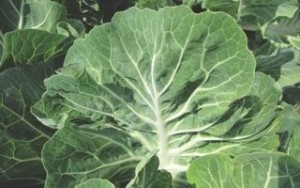By Gretchen C. Van Benthuysen
THE CORN IS as high as an elephant’s eye, tomatoes have finally turned red and you have more zucchini than you can eat. So all’s well with your home garden, right?
Nope. It’s time to start thinking about your fall garden. Really!
Some veggies thrive in the heat of July and August. Others prefer cooler spring and fall temperatures, which is why it’s nearly impossible to grow such things as salad greens, broccoli, kale, cabbage, cauliflower, spinach, beets, carrots and peas now.
Whether you start your own plants or buy seedlings locally or online, you can harvest fresh food through Thanksgiving.
Sickles Market, 1 Harrison Ave, Little Silver, plans to sell 4-packs, 6-packs and 4-inch pots of brassica vegetables (broccoli, kale, cabbage, cauliflower) beginning mid-August, said garden center manager Michael Prandato. Lettuces, kale, spinach and hard-to-find herbs, also will be offered. Organic varieties are included.
“There’s been a dramatic increase in folks growing their own vegetables, both spring and fall,” Prandato said. “Millennials, croppers, young and old, in raised beds, patio boxes and regular gardens.”

Millennials (ages 18-34) are the fastest growing segment, according to a 2014 special National Gardening Association report, “Garden to Table: A 5-Year Look at Food Gardening in America.” In 2008 there were 8 million
millennial food gardeners. In 2013 there were 13 million, up 63 percent. Millennials also nearly doubled their spending on food gardening from $632 million in 2008 to $1.2 billion in 2013.
Local garden centers such as Dearborn Farms, 2170 Route 35, Holmdel, and Brock Farms, 375 Route 34, Colts Neck, recently had Hudson Valley Seed Library heirloom seed packs on the shelf at $2.99 and $3.99. Varieties included Merlot Lettuce, Radiant Radish Blend, Tom Thumb Peas, Kaleidoscope
Carrots and Bloomsdale Spinach. More information at www.seedlibrar y.org.
Other season extenders include Brussel sprouts, radishes, arugula, lettuces, peas, bunching onions, garlic, turnips and potatoes. Asparagus and rhubarb are perennials that can be harvested next spring if planted this fall.
Keep in mind veggies require full sun (six to eight hours), except for leafy greens and lettuce which can handle partial shade. If your garden plot is small or nonexistent, use pots 12to 18-inches deep that drain well. ( S o r r y , a s p a r a g u s a n d rhubarb hate pots.)
Seeds for fall plants, like people, prefer air conditioning in August, said Chelsey E. Fields, vegetable product manager of W. Atlee Burpee & Co. in Warminster, Pennsylvania.
“It’s really hot and dry in August and it can wreak havoc on plants’ life cycles,” she said. “Seeds should be started indoors and transplanted outside after six to eight weeks when night temperatures dip and the soil cools down.
“Brassicas mature between 0 and 60 days,” Fields said. “After eight weeks the roots are fully developed and ready to plant. They’ll be mature before the first frost (mid-October in Monmouth County). A light frost actually sweetens them up.” It does the same for carrots and kale.
Speaking of kale, what a success story! Fields said sales for the hardy cabbage – a variety that produces erect stems, large leaves and no compact head – have doubled since it was introduced four years ago.
“I think its popularity is tied to the juicing craze as it packs a big punch for the amount you eat,” she explained. “Instead of 10 cups of berries, you can drink an 8-ounce smoothie made with kale packed with nutrients.
“It’s become mainstream. There are lots of recipes, it shows up on menus and in stores in clear bags. But nothing tastes as fresh as when it’s grown in the home garden,” she added.
Another home garden trend that’s also picking up speed is planting a year-round perennial herb garden.
“Many herbs are hearty enough to survive the winter (in New Jersey) and planting in fall gives you a head start for the spring since there’s no acclimation period or need to establish roots,” she said. “And an added benefit, with a mild fall, is using fresh sage and thyme in your Thanksgiving stuffing.”
Other popular herbs for fall planting include rosemary, chives and common oregano, she said. You will need six to eight hours of direct sun. As long as the herbs establish a strong root system it should carry them through the winter. A sheltered area facing south is helpful.
“Transplanting anything in August is so difficult in our area. The heat so oppressive,” Fields said. “August is a good time to enjoy the harvest and September is a kind of rebirth and a second summer season.”
Gretchen C. Van Benthuysen is a garden writer who comes from a long line of farmers.














